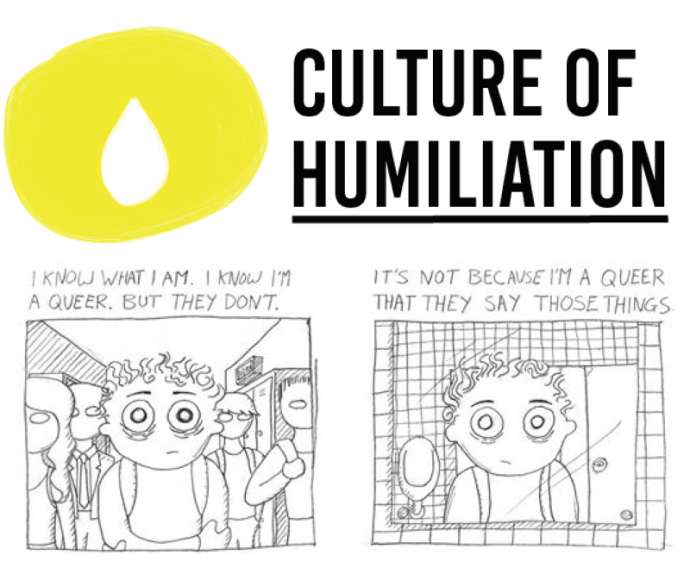While the most visible part of the work Ljubljana Pride (Društvo Parada Ponosa) does is the annual parade, which comes at the end of a few weeks of activities, the group works all year to make everyone feel at home in Slovenia. One of its current projects it the Culture of Humiliation, which I first came across on the related Facebook page. Curious to learn more, and to help spread word of the project, I sent some questions to Mateja Morić, who was kind enough to reply.
What problems does the Culture of Humiliation project want to address?
This project is aimed at a quite specific target group – young LGBTIQ+ individuals who experienced some form of (cyber)bullying. That group faces serious challenges but lacks institutional support in Slovenia. The reality of the Slovene context is that there is a big stigma around LGBTIQ+ identities, and LGBTIQ+ people are faced with institutional discrimination and oppression. Furthermore, discussion about (cyber)bullying is not recognised as important by the general public, and there are no systematic and strategic support or attempts to tackle it; it is not even recognised as a big problem.
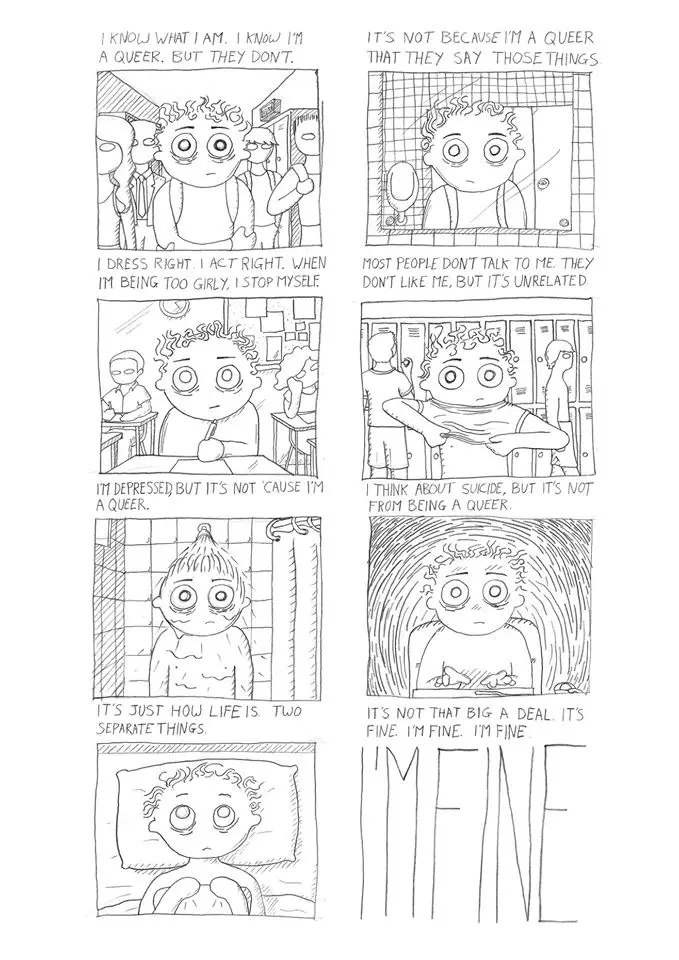
"Abuse is easily internalised when you're young and it's all you've ever known"
"I'm Fine" by Verity Ritchie

How common is such bullying is such bullying in Slovenia?
Research conducted in 2017 showed that its very widespread: most of the young LGBTIQ+ people questioned faced violence and/or discrimination based on their sexual orientation and/or gender identity from peers during their education, and in almost same percentage the institutional responses to such attacks failed. Such stories are also reflected when talking to other members of the LGBTIQ+ community.
Usually it starts in the form of so-called micro aggressions. Using hateful language, comments rooted in misogyny and sexism, racism… Most of the time this behaviour is normalised and not looked at as anything special, and then it slowly progresses. The thing is, if you don’t react at this first level then you’re silently giving the attackers permission to proceed. Which they usually do.
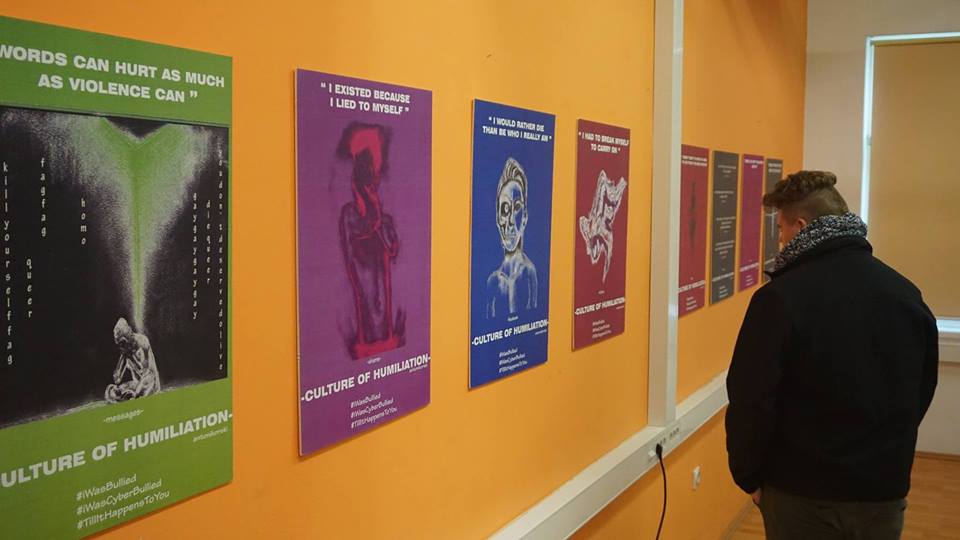
How are schools dealing with the problem?
Schools are not ready to tackle it, especially if we’re talking about any kind of violence based on someone’s (perceived) sexual orientation, gender identity and/or expression. LGBTIQ+ identities are still mostly taboo in schools, and the support young people get there depends on the support they get from their friends, and sometimes a teacher who will try to help.
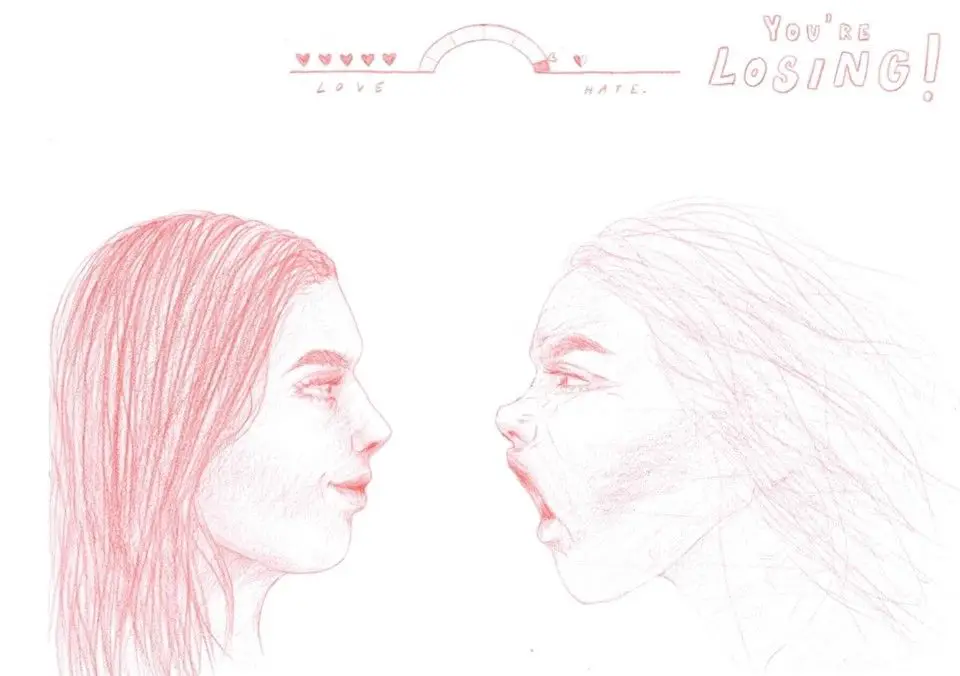
"I suppose what gave me the inspiration to draw this picture is the idea that love should always prevail in the end. It’s hard to stay positive when you’ve got so much negativity surrounding you all the time, whether it’s at school, at work, or at home and it’s definitely hard to not give back the same hate that you receive. But there is bravery in staying soft in a world full of hate. Being bullied may have given me thicker skin but it did not make me hard. It did, however, make me well aware of how words can hurt a person but also of how they can raise a person up. And I’d pick making someone smile over making them insecure any day. Because at the end of the day, it feels so good to be good". Anna Marie Strmecki
How does the Culture of Humiliation try to help?
This project empowers young people to express themselves through art, opening the possibility to not only offer them art as a method which might help them to deal with their own experience of violence, but also opportunities to influence and help others by promoting the strong anti-violence messages. Art is the most powerful media, because anyone can use it to express themselves; it is a language everyone understands. Also, art shows the emotions, the state of the person who created it. It is personal and intimate – making it easier for others to empathize with the cause presented. It builds understanding on a completely different level.
Another very important step in that process is inclusion of LGBTIQ+ youth – supporting them, giving them the independence they so often lack and offering them a powerful tool. By including LGBTIQ+ youth to tackle the challenges that are happening to young people in general, we are giving them space in society where their values, skills and needs are recognized and appreciated. Also, by aiming at such a specific and challenged group, we put focus on their inclusiveness and diversity – by giving them a voice.
After working on this project for a few years now, we have realized that nothing makes people more interested in a new topic than hearing about it from a personal experience. A personal story allows them to connect with someone and put themselves in their shoes. Storytelling allows us to do just that, and to open diverse new topics in a way that is accessible to our audience and allows them to be touched by our stories. So this year, based on the idea of our volunteers and people active on the original project, we decided to expand our project in one more direction: empower young LGBTIQ+ people to tell their own stories through the use of storytelling techniques.
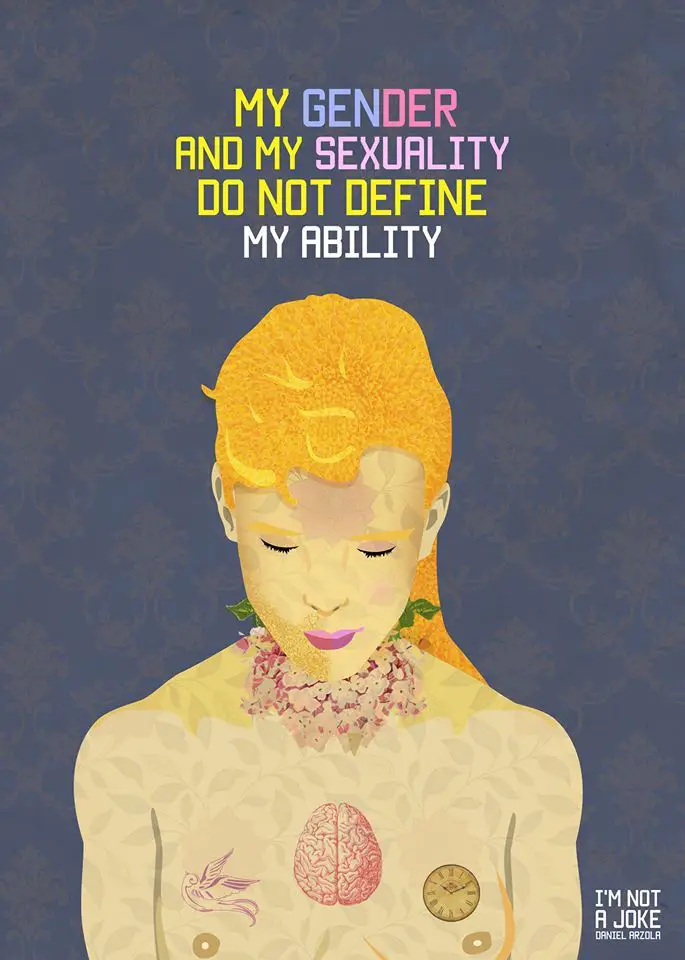
Daniel Arzola
Where can people see the exhibitions?
Over the last two years, an exhibition featuring the art of Daniel Arzola and Anthony Karadzoski, two amazing artivists we collaborated with (the latter being an initiator of the Culture of Humiliation project) has been set up in numerous places: youth centres, schools and gallery spaces around Slovenia.
The second exhibition, that came as an upgrade of the original idea, featured exhibits made by local LGBTIQ+ young people, and had its official opening during the Ljubljana Pride Festival 2019, in the Glass Atrium at the City Hall. From September onwards, this exhibition will also be available for travelling, with the preference to exhibit it in spaces where young people meet, as they are the one who it is at for.
Can you say something about the online part of the project?
The online part we use for showcasing the art of the LGBTIQ+ youth and raising awareness of the general public. We are currently introducing the young LGBTIQ+ artists whose art was featured on the last exhibition in our Culture of Humiliation fb page. There is also a project website, www.cultureofhumiliation.org, where you can read more about the background of the project and its beginnings, get to know more about bullying and get support if you need it.
How can people get involved?
If you are an LGBTIQ+ person, you can still apply to join the storytelling training we are organising in August, between 22nd and 25th in beautiful Rakov Škocjan (the application deadline is 15th Auustg). We will explore into different topics that concern us, such as bullying, family rejection, and discrimination based on gender/sexuality, but also exploring our identities, coming out, community, working and volunteering for LGBTIQ+ organizations, or anything else people want to share. The training will be in English and Slovene. More information and an application can be found here.
On the project website there is also a possibility to share your art based on your personal experience with discrimination, (cyber)bullying, hate speech… And if you feel inspired after hearing about all this then please get in touch, or contact us if you would like to host the exhibition at This email address is being protected from spambots. You need JavaScript enabled to view it.
All our stories about LGBTIQ+ issues are here, and if you'd like to add to them, please get in touch at This email address is being protected from spambots. You need JavaScript enabled to view it.

